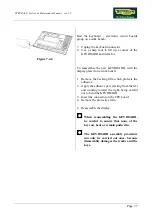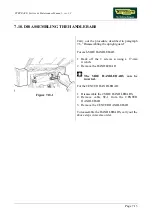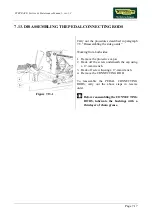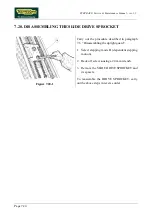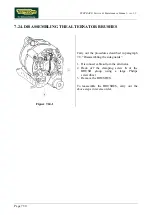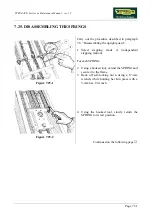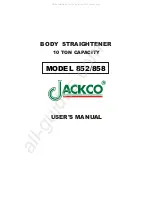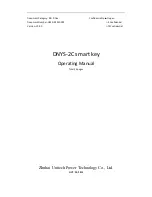
STEPRACE: Service & Maintenance Manual - rev. 1.2
Page 7.17
7.13. DISASSEMBLING THE PEDAL CONNECTING RODS
Figure 7.13-1
Carry out the procedures described in paragraph
7.8. “Disassembling the side guards”.
Working from both sides:
1. Remove the protective cap
a
.
2. Back off the screw underneath the cap using
a 17-mm wrench.
3. Back off screw
b
using a 17-mm wrench.
4. Remove the CONNECTING ROD.
To reassemble the PEDAL CONNECTING
RODS, carry out the above steps in reverse
order.
Before reassembling the CONNECTING
RODS, lubricate the bushings with a
thin layer of chain grease.
Summary of Contents for Steprace
Page 1: ...SERVICE MAINTENANCE MANUAL REV 1 2...
Page 2: ......
Page 4: ......
Page 8: ...STEPRACE Service Maintenance Manual rev 1 2 Page iv Page intentionally left blank...
Page 16: ...STEPRACE Service Maintenance Manual rev 1 2 Page 2 6 Page intentionally left blank...
Page 46: ...STEPRACE Service Maintenance Manual rev 1 2 Page 6 20 Page intentionally left blank...
Page 96: ...STEPRACE Service Maintenance Manual rev 1 2 Page 8 12 Page intentionally left blank...
Page 104: ...STEPRACE Service Maintenance Manual rev 1 2 Page 10 6 Page intentionally left blank...
Page 113: ......





